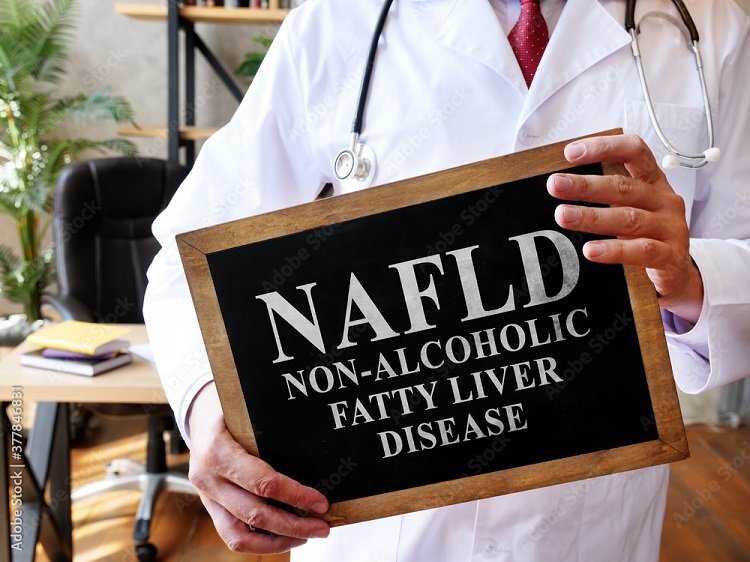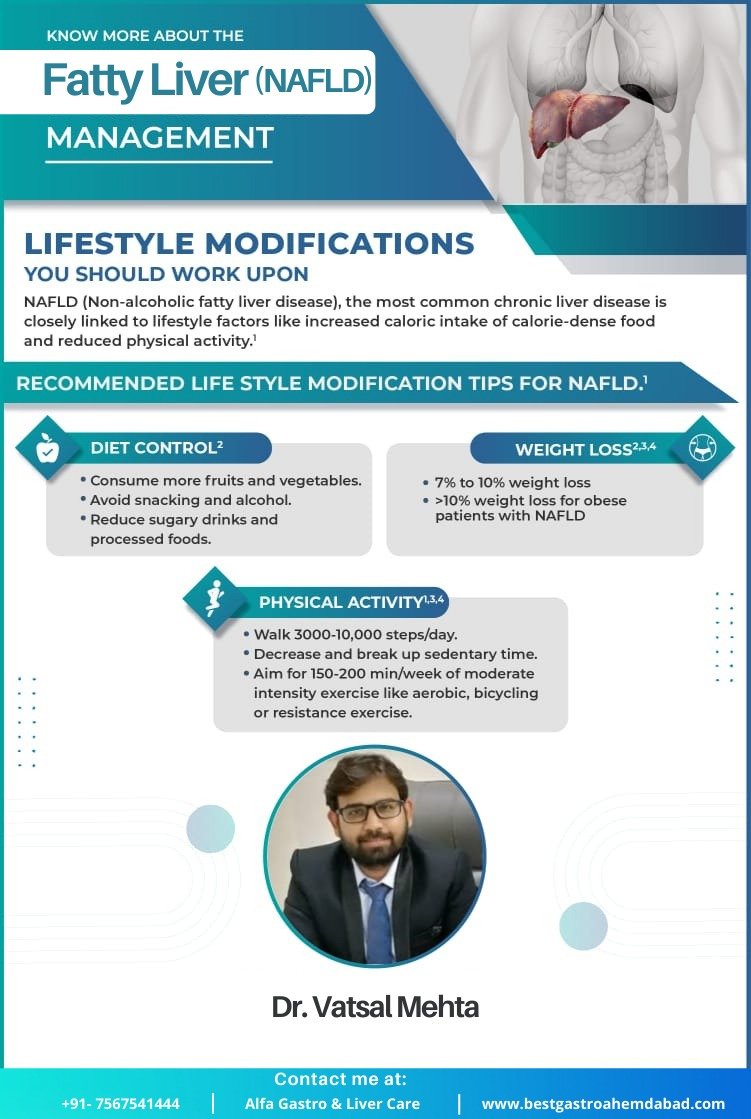Non-Alcoholic Fatty Liver Disease (NAFLD) – Symptoms, Causes, Risk

Non-alcoholic fatty liver disease (NAFLD) is one of the common liver problems which is caused due to the deposition of excess fats in the liver of people consuming little amount of alcohol or not at all. Fatty liver is the most common form of non-serious NAFLD condition and does not damage the liver. In this condition, fats get accumulated in the liver cells. But, in some people with NAFLD, there may arise a serious condition called non-alcoholic steatohepatitis (NASH), which is a serious condition that might lead to severe scarring and cirrhosis.
Cirrhosis is the developed stage of fibrosis (scarring) of the liver as a result of many forms of liver diseases and conditions, such as primary biliary cholangitis, hepatitis, and chronic alcohol consumption. Scars refrain the liver from functioning properly. One may not be able to figure out the symptoms in the beginning stages of the disease. The scars block the blood flowing through the liver and slow down the ability of the liver to process nutrients, hormones, drugs, and poisons.
SYMPTOMS OF FATTY LIVER
In most fatty liver cases, the symptoms are unnoticeable. When symptoms show up, they usually include
- pain in the upper right side of the abdomen
- weight loss
- fatigue
- enlarged spleen or liver
- ascites or swelling in the belly
- yellowing or paling of the skin and eyes (jaundice)
- enlarged blood vessels beneath the skin’s surface
- red palms
If fatty liver leads to cirrhosis, the symptoms may include
- mental instability or confusion
- internal bleeding
- fluid retention
- unhealthy liver functionality
If you have a long-standing issue as described above, you should consult your Gastroenterologist.
CAUSES
The exact cause of fatty liver is not known. But researchers are focusing on some of the factors that may contribute to the development of NASH. The causes include :
- Oxidative stress, i.e, imbalance between pro-oxidant and antioxidant chemicals leading to liver cell damage
- Production and release of cytokines (toxic inflammatory proteins) by the patient’s own inflammatory cells, fat cells, or liver cells
- Apoptosis, liver cell necrosis, or death
- Inflammation and infiltration of adipose tissue (fat tissue) by white blood cells
- Gut microbiota (intestinal bacteria) which may be responsible for liver inflammation
RISK FACTORS
More than 10 million cases of fatty liver arise in India per year. Insulin resistance can be the strongest risk factor, but one can have NAFLD without being insulin resistant. The other risk factors for NAFLD can be :
- poor eating habits
- sudden weight loss
- type 2 diabetes
- high cholesterol levels
- obesity, when fats get accumulated in the abdomen
- high triglyceride levels in the blood
- metabolic syndrome
- use of corticosteroids
- underactive thyroid (hypothyroidism)
- underactive pituitary gland (hypopituitarism)
- use of certain medications for cancer, including Tamoxifen for breast cancer
- polycystic ovary syndrome
- pregnancy
DIAGNOSIS
As fatty liver does not usually show up any symptoms, so, the diagnosis often begins after a blood test. If the level of enzymes in the liver is higher than the normal level, then the person might be developing fatty liver. This is usually revealed in a standard blood test. The levels of liver enzymes being higher than normal can also be an indication of other liver diseases. The doctor needs to eliminate other conditions before diagnosing NAFLD.
An ultrasound of the liver can be performed to diagnose excess fat in the liver. Transient elastography, one of the ultrasound types, measures one’s liver’s stiffness. The greater is the liver’s stiffness, the more scarring it causes. If these tests are insufficient to make any conclusions, the doctor may recommend a liver biopsy. In this test, the doctor detaches a small sample of liver tissue with a needle inserted through the abdomen.
The pathologist interprets the biopsy sample and determines whether NASH is present and, if it is, then he tests if there’s any liver damage or scarring. Special blood tests or a combination of routine blood tests may be conducted to evaluate for possible liver scarring in patients. Since none of these tests are perfect, patients with NAFLD are advised to discuss the risks and benefits of these tests with the doctor to decide which tests fit in their condition. It is better to do a combination of tests to check if they all indicate the same degree of fat in the liver and liver scarring. If so, the doctor may recommend a liver biopsy.
COMPLICATIONS
The main risk of NAFLD is cirrhosis, which can lead to the improper functioning of the liver. The important functions of the liver include :
- producing bile, which helps in breaking down the fats and removes waste from the body
- process hemoglobin and store iron
- conversion of ammonia present in the blood to harmless urea for excretion
- store and release glucose (sugar) as needed for energy
- produce cholesterol, which is necessary for cellular health
- remove bacteria from blood
- produce immune factors for fighting infections
- regulation of blood clotting
If cirrhosis isn’t cured it can lead to
- deposition of fluid in the abdomen (ascites)
- swelling of veins in the esophagus (esophageal varices), that may rupture and cause bleeding
- mental confusion, induced sleepiness, and slurred speech (hepatic encephalopathy)
Cirrhosis can sometimes lead to liver cancer or liver failure. In some liver failure cases, it can be cured by medication but, generally, a liver transplant is required.
PREVENTION
There’s no certain treatment to cure NAFLD. But the doctor may recommend certain changes in the lifestyle which may include:
A healthy and proper diet – One should eat a healthy plant-based diet that is rich in fruits, vegetables, and multi-grains.
Maintain a healthy weight – One needs to lose his/her weight if he/she is obese by reducing the number of calories one intake. One also needs to control the cholesterol level and blood glucose level.
Exercising regularly – One should exercise regularly for at least 30 minutes a day. Exercising will not only be beneficial for the liver but also help in the regulation of body temperature and help in the circulation of blood.
Avoiding alcohol and drugs – Undoubtedly, alcohol reduces the ability of the liver to function properly. So, one should refrain oneself from consuming alcohol or drugs.
